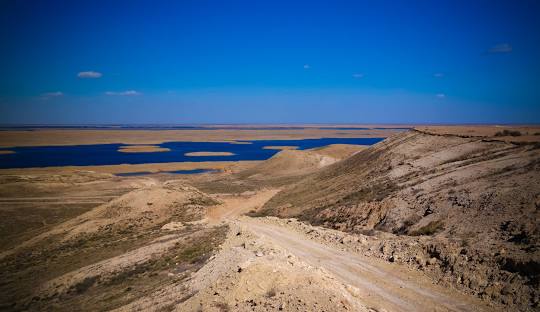Aral Sea, Uzbekistan
🌊 Aral Sea: A Lost Ocean and a Landscape of Ghostly Beauty 🌊
Once the fourth-largest inland sea in the world, the Aral Sea was a vast, shimmering expanse that shaped life in Central Asia for centuries. Today, it stands as one of the planet’s most haunting environmental catastrophes — a surreal, unforgettable destination where sand dunes cover ancient seabeds and abandoned ships lie stranded in the desert.
Visiting the Aral Sea is not just a trip — it's a journey into a place where history, tragedy, and resilience collide.
🚢 The Ghostly Ship Cemetery of Moynaq 🚢
-
Moynaq was once a thriving fishing town bustling with life and industry.
-
Today, rusted ships sit marooned on dry desert sands, surrounded by nothing but silence and salt flats.
-
Walking among the shipwrecks is a surreal, emotional experience — a stark reminder of how human intervention can reshape nature forever.
Tip: Visit the Moynaq Museum of the Aral Sea for a deeper understanding of the town’s lost maritime past.
🏜️ Adventure to the Remaining Aral Sea 🏜️
-
The sea still exists, but it has retreated dramatically, splitting into smaller lakes known as the North Aral Sea and the highly diminished South Aral Sea.
-
From Nukus or Moynaq, adventurous travelers can take off-road tours across vast desert plains to reach the shores of the South Aral Sea.
-
Camping on the Aral Sea’s lonely shores, under endless stars, is a once-in-a-lifetime experience.
📚 The Aral Sea Story: A Man-Made Tragedy 📚
-
In the 1960s, Soviet irrigation projects diverted the rivers feeding the Aral Sea to support cotton farming.
-
Over just a few decades, the sea shrank by over 90%, devastating ecosystems, economies, and entire ways of life.
-
Dust storms from the exposed seabed, filled with salt and chemicals, have worsened health problems across the region.
The Aral Sea is now often cited in textbooks as one of the world's worst ecological disasters.
🏞️ Other Nearby Sights 🏞️
-
Ustyurt Plateau:
A breathtakingly desolate limestone plateau near the Aral Sea, featuring cliffs, canyons, and bizarrely beautiful barren landscapes. -
Sudochye Lake:
A wildlife refuge where flamingos, herons, and other birds still thrive amid an otherwise harsh environment.
🌞 Best Time to Visit 🌞
-
The best time to explore the Aral Sea region is spring (April–May) or autumn (September–October).
-
Summers are brutally hot, and winters can be icy cold and windy.
🚗 How to Get There 🚗
-
From Nukus: The main gateway city to the Aral Sea.
-
Private tours and jeeps: Most travelers hire 4x4s and guides to navigate the challenging desert terrain.
Travel Tip: Given the remoteness and rough roads, it’s highly recommended to travel with an experienced local guide.
📸 Best Photo Moments 📸
-
The rusted ship graveyard under a blazing sunset.
-
Lonely desert horizons stretching forever.
-
Ancient seabeds with salt patterns glowing under the sky.
-
Camping shots beside the shrinking shores of the South Aral Sea.
✨ Fun Facts About the Aral Sea ✨
-
The Aralkum Desert ("Aral Desert") was once the seabed — now one of the world’s newest deserts!
-
In parts of Kazakhstan, efforts to partially restore the North Aral Sea have seen some success.
-
The remains of old fishing villages, now eerily abandoned, tell stories of lost livelihoods.
Visiting the Aral Sea is a sobering, powerful experience — offering a rare look at one of Earth’s most profound environmental changes. It’s a place where the silence speaks volumes, and every grain of sand carries a story of loss, resilience, and hope.


